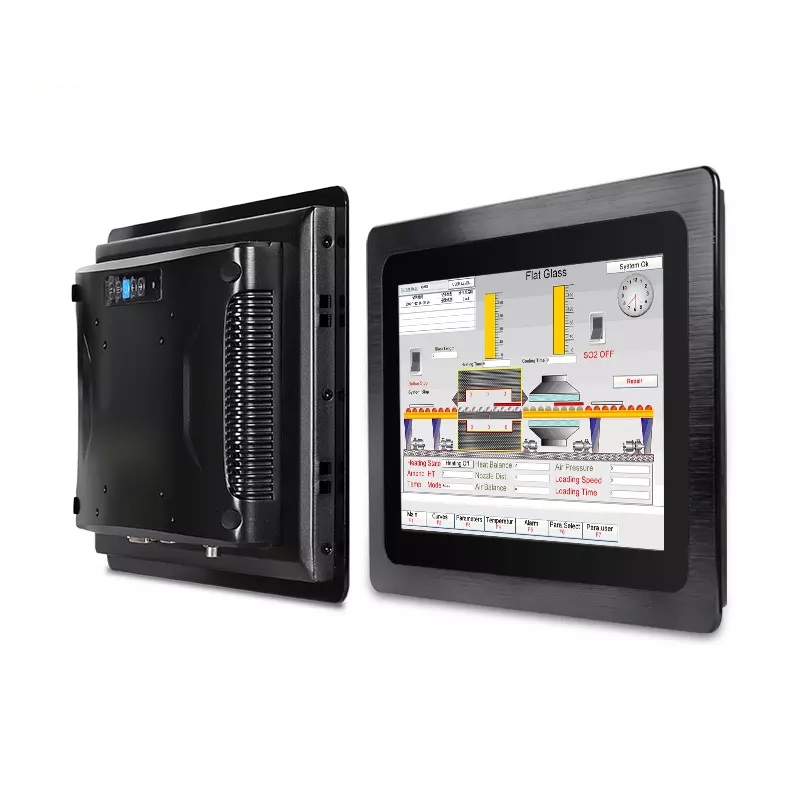Industrial lcd displays are displays that apply industrial control processes or equipment. What’s unique about it? The special dust-proof and shock-proof design adopts an industrial-grade LCD display. In cases where higher than required, consider a wide temperature LCD. Currently, only a few large foreign factories produce such displays at higher prices. The protection level of industrial displays is represented by IP*, the former is dust-proof and the latter is waterproof. The highest dustproof rating is 6 and the highest waterproof rating is 8.
1.Brightness
Since most flat panel LCD displays are not used in a chamber environment and have a brightness of about 250-300 dm2 (nits), the most commonly used LCD displays have a diagonal size of 15 inches. However, in industrial environments, displays with this brightness level are used and cannot meet the requirements because the ambient light will be stronger and its brightness will easily exceed the brightness of the LCD backlight. Additionally, the use of touch screens, often found in industrial settings, can also reduce the brightness of the display and make it appear dimmer. In ordinary medical, industrial and public phone booths, the required brightness should be at least 450cd/m2. Response Time Passive display technologies, including LCDs, have had very poor response times compared to active emissive display technologies. Whether it’s a laptop or desktop, a response time of less than 30 milliseconds is sufficient in consumer monitors. However, in the industrial, medical and gaming fields, users can feel moved in dynamic content environments, which means that LCD displays should respond faster with time. Among relatively new technologies, AVS (Advanced Super View) technology or MVA (Multivariable Vertical Alignment) technology has enabled response times of less than 10ms. In TVs using ASV, this index reaches 6 milliseconds.
2.Contrast
Unlike consumer displays that are primarily intended for direct viewing, users may not be able to view industrial-grade LCD displays at optimal distances or under ideal lighting conditions, so a higher-contrast display is the best option.
For 10.4-inch, 12.1-inch or 15-inch monitors used in most industrial areas, 4501 Contrast is the best choice.
3.Color
In some industrial applications, where special color information is more important than text or numbers, it is important to base color as a measured NTSC color saturation percentage. In LCD products, color saturation depends entirely on the influence of backlight. CCF backlighting is a very popular technology that can achieve 70% and 80% of NTSC color saturation.
In some applications, this range is not competitive enough, and sometimes the desired range is close to 100% of NTSC color saturation. This full color saturation is typically achieved in LCD products that use light-emitting diode backlights.
4.View Angles
Industrial Monitors Commercial and consumer monitors are generally designed for use by individuals who sit directly in front of the lcd monitor. However, in most industrial applications, such situations are very rare, for example, a physician or nurse cannot stop and look directly at the display during diagnosis and treatment, and they only want to know the expected data. For large machines, the operation only shows what is possible in front of the doctor. For ship or airplane navigation, it is also inconvenient to sit directly in front of the LCD monitor and bask in the sun. Especially when there are multiple monitors, monitors facing the viewer at different angles should have a wide range of viewing angles, or “the ability to understand what is being displayed at a glance.” Consumer monitors cannot meet such requirements because they use TwistedNematic perspective. To better suit industrial applications, displays are required to have a wide range of viewing angles. Currently, display technologies with viewing angles up to 178 degrees (such as ASV or MVA) have been developed.

